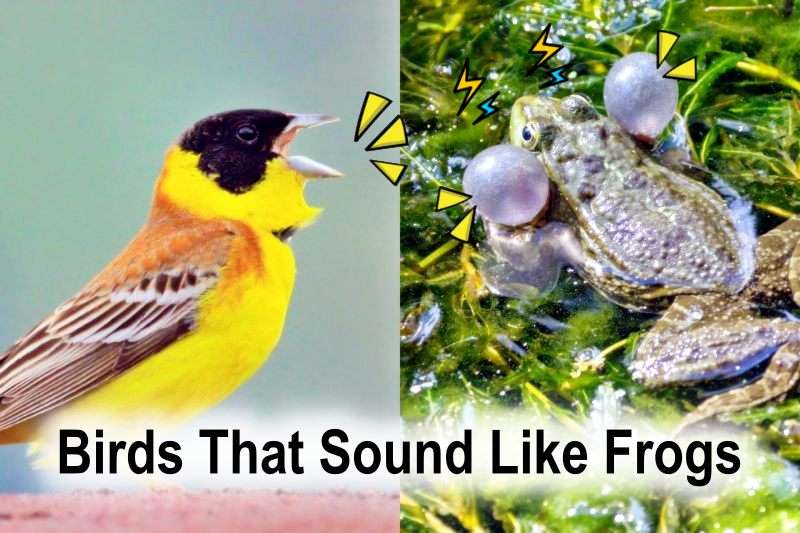Sound plays a crucial role for almost all animals, including birds, who rely on their heightened auditory senses for various activities. Birds use vocalization for communication, to attract potential mates, and also to ward off any predators. Their calls are particularly helpful in identifying the species and hold great value for ornithologists. In today’s article, we are going to talk about the list of Birds that Sound like Frogs. So without much ado, let’s jump on to today’s write-up.
What is Mimicry And Which Birds Are Best in Mimicry?
To understand the concept of mimicry, we have to shed some light on the topic of adaptation. Well, adaptation refers to the characteristics of an organism, both physical and behavioral, which increase the chances of survival or helps the organism to survive better in their respective habitats. Adaptations may be sensory, physiological, morphological, or behavioral.
Mimicry is a form of adaptation that refers to a resemblance between an organism and another object or another organism belonging to a different species.
To understand it in simple terms, we often see people enacting each other or mimicking each other, which is exactly the case in the animal world. Mimicry may be morphological, i.e., one species may look like another species in terms of appearance, or it may be in terms of behavior, etc.
Birds are one of the many animals that show excellent mimicry. Sound or voice mimicry is one of the most predominant forms of mimicry that one can see in birds.
Vocal mimicry involves birds mimicking other animals like frogs and even humans and objects like a chainsaw, car engines, etc. The most promising mimicry is shown by species belonging to the family of parrots, mockingbirds, and lyrebirds.
The Difference In Calls of Wild Frogs and Toads
Frogs and Toads both belong to the order Anura. Most people often confuse the two, as they look so surprisingly similar. Though there are quite a few physical differences between the two, their vocalizations are quite similar.
However, different species of frogs and toads make many different sounds. So, it’s better to know the difference in the sound of two particular species of frog or toad, not the general term.
Listen the calls of different wild frogs and toads, visit here.
Do All Frogs Sound the Same?
No, all frogs do not sound the same. Vocalizations in frogs depend greatly on several factors, like the species, sex, age, and even on certain occasions, their habitat.
The sound of frogs also varies greatly among individuals of the same species and is an excellent tool used by researchers for interspecific differentiation and identification. Their calls vary in pitch, rhythm, and duration and serve several purposes.
Firstly, they serve as mating calls, wherein the males may use sounds to attract females. Sounds are also used by frogs to establish a territory and also warn the competing males to stay away from their territory. Their distinctive calls can be used by experts to easily tell them apart.
Best Mimicry Birds that Sound like Frogs
1. Northern Mockingbird
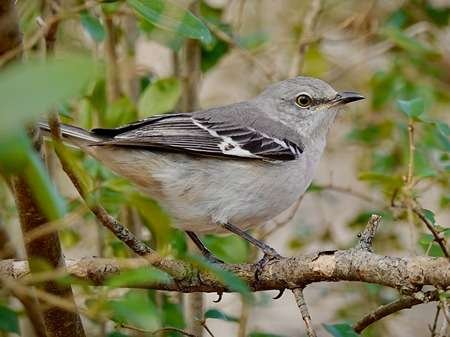
- Scientific Name: Mimus polyglottos
- Size: 8-11 inches
- Location: North America
- Appearance: Grey upperparts; Black and white wings; Chest and belly regions are whitish
- Diet: Omnivorous diet; consisting of insects, lizards, earthworms, fruits, seeds, berries, etc.
The first bird in this list of Birds that Sound Like Frogs is the Northern Mockingbird. Mockingbirds get their name from their ability to mimic a wide spectrum of sounds, including other birds, frogs, and toads.
Researches depict that mockingbirds are quite adept in mimicking toads, especially the Woodhouse toad, as its vocal frequency got into the match with the mockingbirds (750-7000Hz).
Though the sounds are almost impossible to tell apart, experts claim that mockingbirds reduce the call duration when mimicking toads like the Woodhouse Toad.
2. American Woodcock
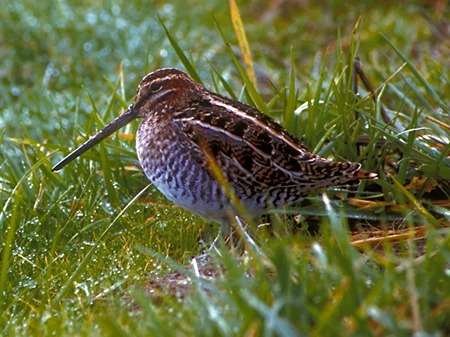
- Scientific Name: Scolopax minor
- Size: 25-32 centimeters
- Location: Canada, Eastern United States
- Appearance: Pump, short-legged body; bodies mainly comprise mixed hues of brown and gray, acting as an excellent camouflage; underparts are cinnamon to orange in coloration
- Diet: Earthworms, snails, spiders, centipedes, ants, and occasionally seeds
The striking similarity between the American Woodcock’s and a frog’s sound is the male’s peent calls during the breeding season.
The buzzy peent is so similar to the frog’s croak that it is almost impossible to distinguish them apart. However, the only point of difference between the two is a small hiccup-like sound that proceeds after the peent call, which is absent in frogs.
3. Rock Ptarmigan

- Scientific Name: Lagopus muta
- Size: 13-14 inches
- Location: Arctic and Sub-Arctic regions of North America, Eurasia, Norway, Scotland
- Appearance: Seasonal molting; White during the winters, while brownish during spring and summer
- Diet: Aspen buds, dwarf birches, catkins, crowberries, willow leaves, etc.
Rock Ptarmigans, especially the breeding males, produce a sound that is strikingly similar to that of frogs.
Guttural snores and rattles that the male rock Ptarmigans make are so similar to that of a frog that if you interchange both their calls, it will almost be impossible to tell them apart.
4. Hooded Merganser
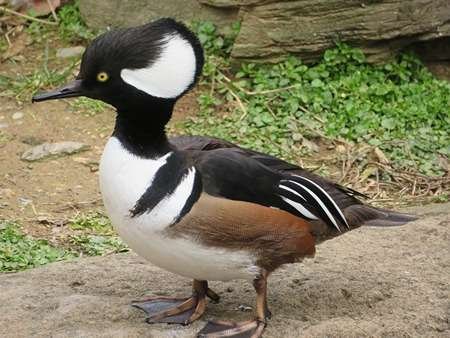
- Scientific Name: Lophodytes cucullatus
- Size: 40-50 centimeters|
- Location: USA, Southern parts of Canada
- Appearance: Sexually dimorphic species; Males have a black head with a crest, and a white patch behind the eyes; Females are grayish-brown, with a brown crest
- Diet: Primarily fish, but may also feed on aquatic insects, crayfish, etc.
Next up, we have the “frog-bird” of Georgia, the Hooded Merganser. Males, especially during the mating season, make a deep, rolling sound that is so similar to a frog’s croak, especially the Pickerel Frogs‘, that unless you see the actual sound source, you wouldn’t believe it is coming from a bird.
5. Toco Toucan
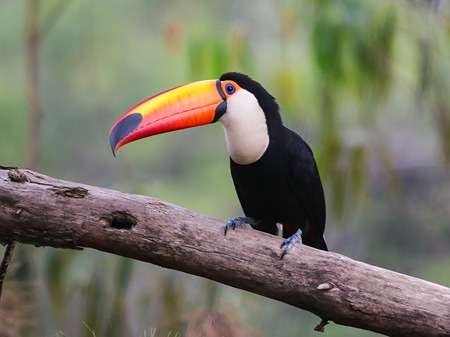
- Scientific Name: Ramphastos toco
- Size: 21.5-25.5 inches
- Location: Bolivia, Peru, Argentina, Paraguay
- Appearance: Bright white throat and chest, black colored body, a large bill with bright orange and yellow colorations
- Diet: Fruits, frogs, reptiles, insects, eggs, and nestlings
Toco Toucans produce a sound that is almost impossible to differentiate from that of a frog or toad. Their sound, as described by bird enthusiasts, is a mix between the low grunt of a pig and the croaking of a frog which makes it quite a unique vocalization.
South America is a paradise for a large number of frog species, and since the Toco Toucans share the same habitat, it will almost be a next-to-impossible task to distinguish them by just listening to their calls unless the listener is an expert.
6. Common Raven
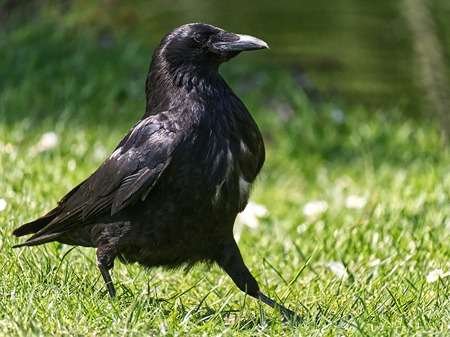
- Scientific Name: Corvus corax
- Size: 25 inches
- Location: North America, Greenland, Asia, North Africa
- Appearance: The plumage of Common Ravens is mostly black, but shows iridescence
- Diet: Omnivores; feed on almost anything ranging from seeds, and grains to carrion, young or smaller birds, garbage from bins, etc.
Ravens are one of the most common birds that people encounter in their daily lives. Since we see them so often, we fail to recognize the immense similarity between the croaky calls to those of frogs and toads.
Next time when you hear a raven calling, make sure to turn your ears, and you’ll realize at once why we have included Common Ravens in this list of Birds that Sound like Frogs.
7. Chukar Partridge
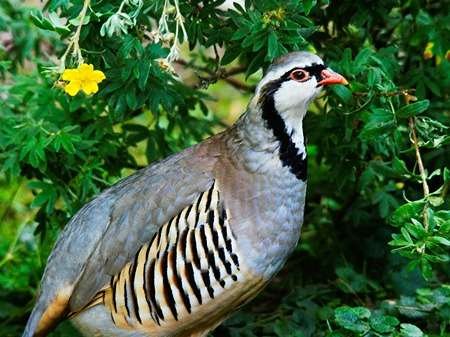
- Scientific Name: Alectoris chukar
- Size: 13-14 inches
- Location: India, Pakistan, Turkey, Iran, etc., in Asia, Canada, Argentina, and New Zealand
- Appearance: Being spread worldwide, their plumage hues may differ. However, their backs are light brown, belly regions are buff colored while the chest is grey.
- Diet: Insects and seeds
The next species of bird in this list of Birds that sound like Frogs are the Chukar Partridges. The songs of these vocal birds are quite loud and start with a low-intensity noise and gradually get louder when its sounds quite like a frog’s call.
The difference in the intensity and pace of the call is the primary differentiation point between the two.
8. Yellow Billed Cuckoo
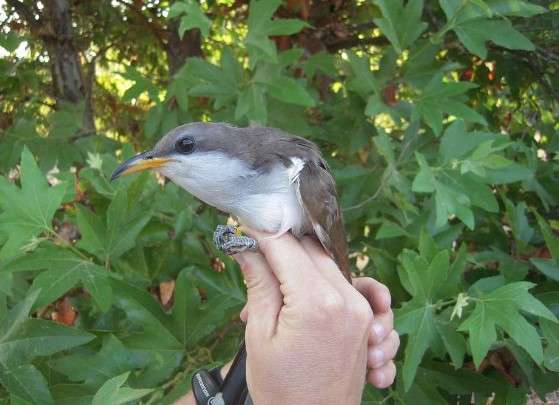
- Scientific Name: Coccyzus americanus
- Size: 26-30 centimeters
- Location: South and Central America
- Appearance: The head, shoulders, neck, and wings are brown while the chin, throat, chest, and underparts are white. The bill, especially the lower portion, is yellow.
- Diet: Insects, lizards, berries, eggs, etc.
Marcy Ashley –Selleck, on behalf of Macaulay Library, produced a recording of the songs of a Yellow Billed Cuckoo from New York, which is astonishingly similar to that of a frog.
The soft, subdued, repeated cooing is one of the striking examples of vocalization similarity in the animal kingdom.
9. Common Nighthawk

- Scientific Name: Chordeiles minor
- Size: 22-25 centimeters
- Location: North and South America
- Appearance: Mix hue of dark brownish-black to lighter brown and white etches along with a forked tail
- Diet: Flying insects like flies, grasshoppers, etc.
Next up on this list of Birds that sound like frogs, we have the Common Nighthawk. Though the Common Nighthawk does not mimic any frog, the calls of a courting male are surprisingly similar to a frog’s croaks.
The croaking “auk-auk” calls, as recorded byTodd. A. Sanders from Oregon on behalf of Macaulay Library, further establish this fact.
10. Barred Owl
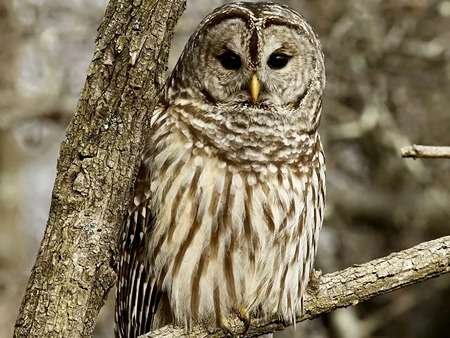
- Scientific Name: Strix varia
- Size: 16-25 inches
- Location: North America
- Appearance: Brownish plumage overall; brown and white streaks in the belly region, white bars on the wings, brown and white patterns on the head
- Diet: Small mammals like mice, other birds, amphibians, etc
Though the Barred Owl does not mimic any toad or frog in the true sense, its hooting call resembles frogs’ calls to a great extent if you listen carefully.
Birds experts have associated their call with the phrase, “Who cooks for you?” and its similarity to a frog’s calls has made it a member of this list of Birds that sound like frogs.
Here we conclude our bird’s article on “Best Mimicry Birds that Sound Like Frogs.” We will be back soon with many more interesting articles. Until then, you may go through our other articles on birds, fishes, mammals, reptiles and many others.
To Listen the Sounds of All Birds, Visit Here.
References:
- Cornell Lab of Ornithology- allaboutbirds- Hooded Merganser
- The Cornell Lab- alaboutbirds- Barred Owl
- macaulaylibrary.org- Northern Mockingbirds
- Sonoma Birding- 12 Birds that Sound like Frogs
Also Read:

A zoology student turned writer. Nature has always been a magnet to me, and to unearth some of its secrets through my articles is my prime intention. If not engaging myself with nature and anime content, you can always find me going through some Bengali classics or filling the air with some soulful Tabla beats. An artist, trying to throw some colors to my blank canvas of life.
